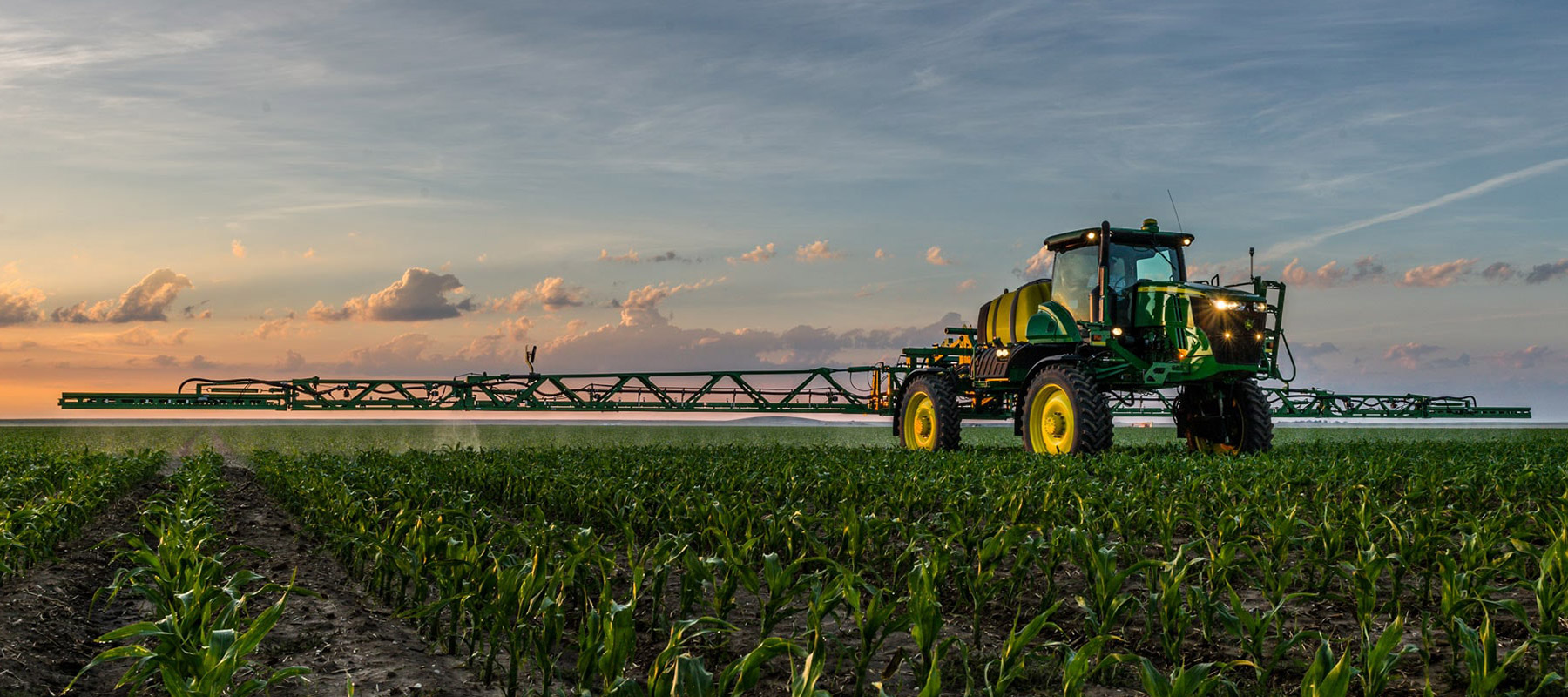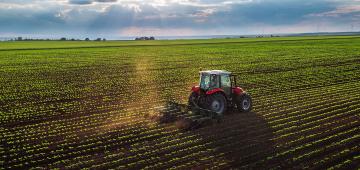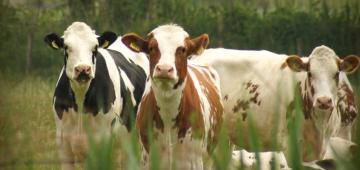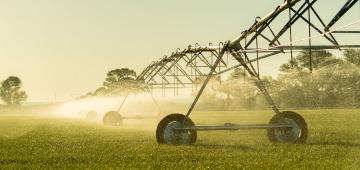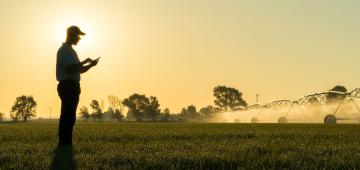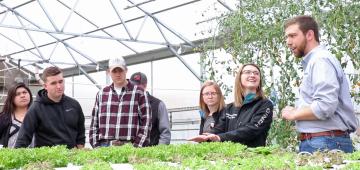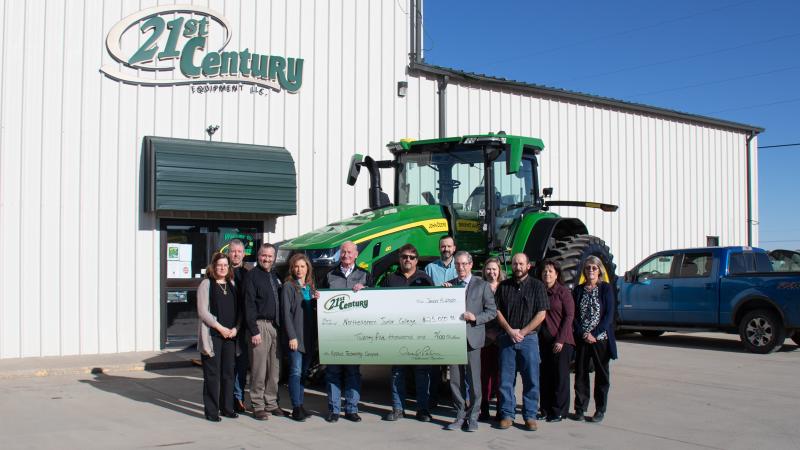This hands on pathway exposes students to GPS guidance and auto-steer technology, unmanned aerial vehicles (drones), variable rate planting, rate controlled sprayers, yield monitors, and state of the art soil sampling systems.
Precision Agriculture
Precision Agriculture-Advanced
Precision agriculture integrates information and production systems in order to increase and improve efficiencies as well as profitability on farms. In this program, students will learn how to incorporate technology in production agriculture by means of equipment and software.
This hands on pathway exposes students to: GPS guidance and auto-steer technology, unmanned aerial vehicles (drones), variable rate planting, rate controlled sprayers, yield monitors, and state of the art soil sampling systems.
Upon graduating with a Production Agriculture degree in Precision Agriculture, students will be prepared for a career in a wide array of positions including: crop consulting, precision farm management, equipment technicians, sales support, and more.
Don’t settle for pure lecture based program, get hands on experience in precision agriculture at Northeastern Junior College.
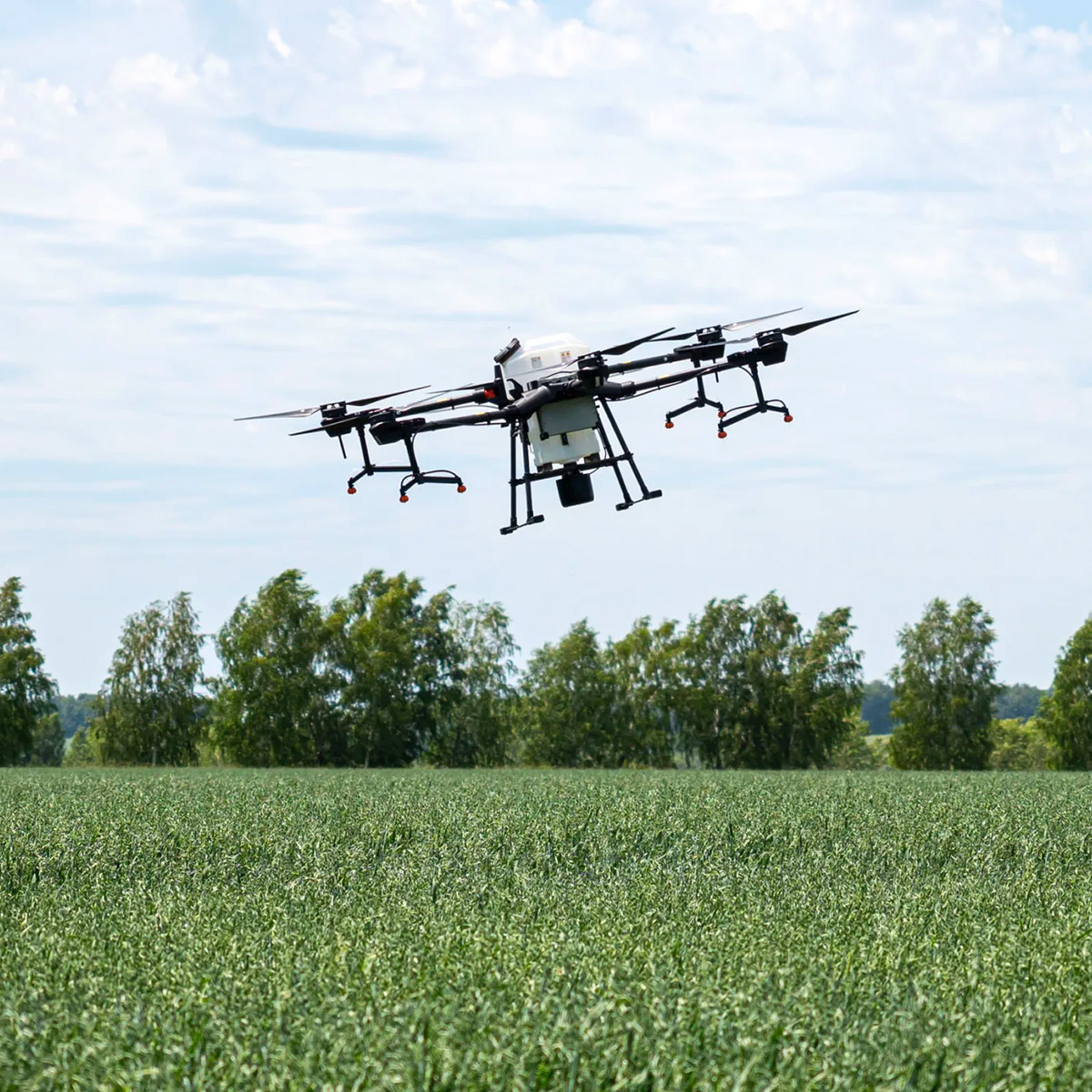
Northeastern is making a large investment in our precision agriculture program because we see the value in teaching this technology to farmers, technicians, sales staff, agronomists, and anyone interested in production agriculture. Specifically, students will learn about agronomy, electrical and hydraulic systems which will all be incorporated into hands on learning with equipment such as: GPS receivers and monitors, RTK signal base stations, auto-steer systems, variable rate corn planters, rate controlled sprayers, yield monitors, unmanned aerial vehicles including quadcopters and fixed wing drones equipped with RBG, NIR, and thermal cameras, and soil moisture sensors.
According to the U.S. Bureau of Labor Statistics, overall employment of agricultural and food science technicians is projected to grow 5 percent from 2022 to 2032, faster than the average for all occupations.
About 5,500 openings for agricultural and food science technicians are projected each year, on average, over the decade. Many of those openings are expected to result from the need to replace workers who transfer to different occupations or exit the labor force, such as to retire.
Employment
Demand will continue for agricultural research into topics such as water resources, pests and pathogens, climate and weather patterns, and biofuels and other agricultural products.
Agricultural science technicians will be needed to assist agricultural and food scientists in investigating and improving the diets, living conditions, and genetic makeup of livestock. Food science technicians will help scientists improve food-processing techniques, ensuring that products are safe, waste is limited, and food is shipped efficiently. Technicians also will continue to be needed to help analyze soil composition and soil improvement techniques, find uses for agricultural byproducts, and selectively breed crops to resist pests and disease or to improve taste.
The U.S. Bureau of Labor Statistics lists the median annual wage for agricultural technicians was $41,760 in May 2022. The median wage is the wage at which half the workers in an occupation earned more than that amount and half earned less. The lowest 10 percent earned less than $29,900, and the highest 10 percent earned more than $63,720.
The median annual wage for food science technicians was $47,860 in May 2022. The lowest 10 percent earned less than $36,050, and the highest 10 percent earned more than $71,370.
In May 2022, the median annual wages for agricultural technicians in the top industries in which they worked were as follows:
| Wholesale trade | $51,030 |
| Colleges, universities, and professional schools; state, local, and private | 47,650 |
| Research and development in the physical, engineering, and life sciences | 43,980 |
In May 2022, the median annual wages for food science technicians in the top industries in which they worked were as follows:
| Beverage and tobacco product manufacturing | $54,780 |
| Professional, scientific, and technical services | 47,810 |
| Food manufacturing | 46,580 |
Agricultural and food science technicians typically work full time and have standard work schedules. Technicians may need to travel, including international travel.
- Produce a written document that clearly explains an agricultural concept.
- Analyze information and use critical thinking to solve an agricultural problem.
- Explain how agriculture relates to global, social, and cultural concepts.
- Develop skills useful in the agriculture industry or transfer to an agricultural degree.
- Apply scientific information and the scientific method to explain agricultural concepts.


